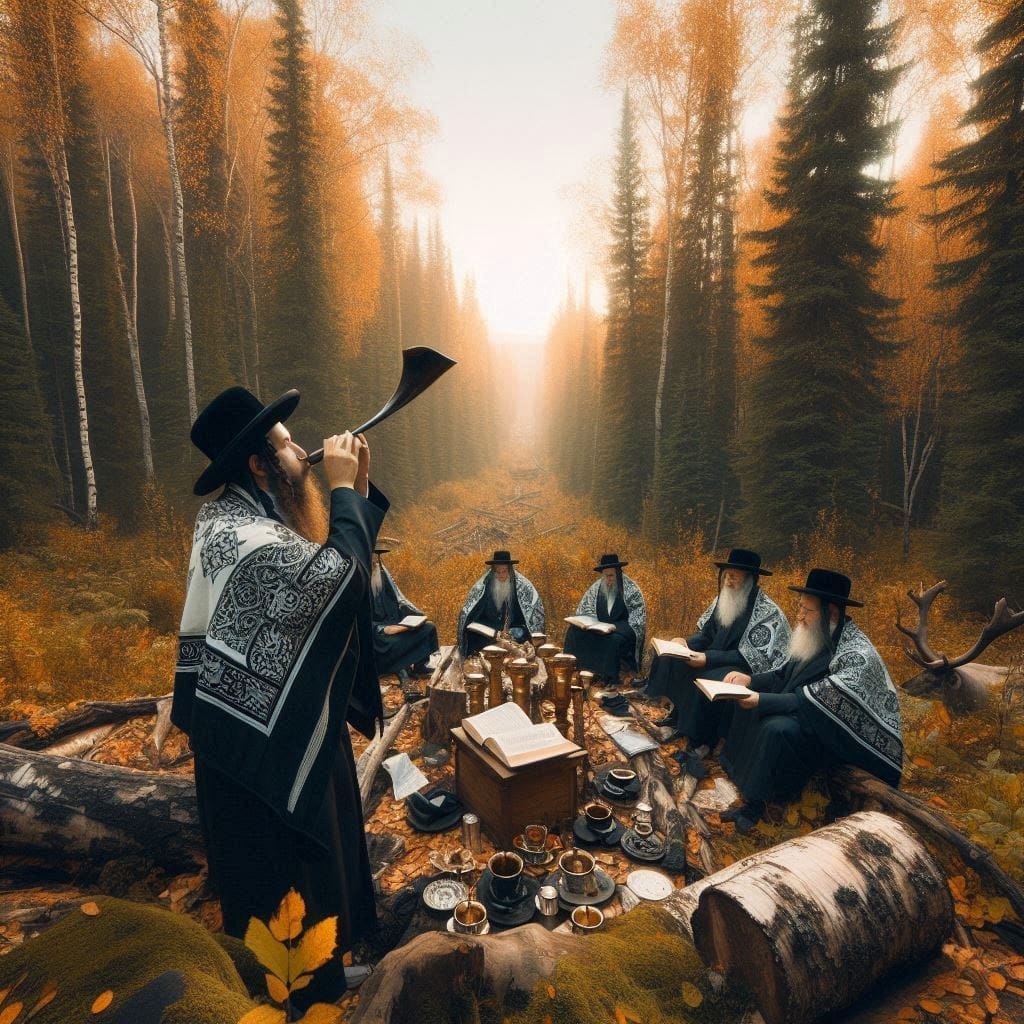
Yom Kippur Like Purim: Fasting, Joy, and the Hidden Face of God Part 1
B"H
Introduction: The Meeting of Two Opposites
There are two Jewish days that at first glance seem to stand at opposite ends of the spectrum. One is Yom Kippur, the holiest and most awesome day of the year, when we fast, refrain from all earthly pleasures, and stand trembling before the King of kings as He judges the world. The other is Purim, the most joyful and festive day of the year, when we eat, drink, laugh, dance, and dress in costumes that turn the ordinary upside down. Yet the sages hinted at a deep mystery: Yom Kippurim, the Day of Atonements, can also be read as Yom K’Purim — “a day like Purim.”
The Zohar and kabbalistic commentators built upon this hint. They explained that the awe of Yom Kippur and the joy of Purim are not two separate paths, but two reflections of the same truth: that Hashem’s presence penetrates both the heights of transcendence and the depths of ordinary life. Yom Kippur reveals Him when we strip away the body; Purim reveals Him when we sanctify the body. One day reveals the light through fasting, the other through feasting.
And in the words recorded in Matthew 6:16–18, Yeshua of Nazareth touches the very same principle. He cautions his listeners not to fast with gloom, not to parade misery before others, but to wash the face, anoint the head, and show joy before God. The fast is not for the eyes of men, but for the hidden Father who sees in secret. In this way, his teaching fits directly within the current of Torah and halacha: fasting, whether on Yom Kippur or a personal day of repentance, is not about performance but about truth — a hidden encounter with the One who searches the heart.
Our task is to trace this river of meaning: from Torah and halacha, through the symbolism of Purim and Yom Kippur, and into the words of Yeshua, to see how the joy of fasting and the joy of feasting are bound together. By doing so, we discover why Yom Kippur is indeed like Purim, and why both days reveal the same secret: holiness is not in the face we show to others, but in the heart we lift before Hashem.

Torah Foundations: Atonement and Joy
The Torah presents Yom Kippur in stark terms. In Leviticus 16, the service of the Kohen Gadol is described with minute detail: entering the Holy of Holies, bringing incense, sprinkling blood, and casting lots over two goats — one for Hashem, one for Azazel. The people are commanded:
“And this shall be a statute for you forever: in the seventh month, on the tenth day of the month, you shall afflict yourselves and do no work, either the native or the stranger who sojourns among you. For on this day atonement shall be made for you to cleanse you. You shall be clean before Hashem from all your sins.” (Leviticus 16:29–30)
Here fasting is called “afflicting oneself” (ve-initem et nafshoteichem). The body is denied in order to purify the soul.
But the Torah also commands a different kind of holy day — Purim, established in the book of Esther. Unlike Yom Kippur, it is not given directly by God at Sinai, but arises from Israel’s own history and is ratified by the people themselves:
“The Jews ordained and took upon themselves, and upon their descendants, and upon all who joined them, that without fail they would keep these two days according to what was written, and at the appointed time every year… that these days should be remembered and kept throughout every generation.” (Esther 9:27–28)
Purim is sanctified not by affliction but by joy: mishteh (feasting), mishloach manot (gifts of food), matanot la’evyonim (gifts to the poor), and reading the megillah. Where Yom Kippur humbles us through fasting, Purim elevates us through celebration.
The paradox is striking: one day commands us to eat nothing, the other commands us to eat in abundance. One day silences laughter, the other multiplies it. Yet both are described in the language of covenant and eternity. Both are central to Israel’s relationship with Hashem.

Halachic Approach to Fasting and Washing
From this Torah foundation, halacha developed precise laws. Yom Kippur, unique among fasts, forbids not only eating and drinking but also five additional afflictions: washing, anointing, wearing leather shoes, and marital intimacy. The Mishnah in Yoma lists these prohibitions explicitly. The Shulchan Aruch codifies them as binding law:
Eating and drinking are forbidden.
Washing for pleasure is forbidden, but washing to remove dirt is permitted.
Anointing for pleasure is forbidden, but for medical need is permitted.
Leather shoes are forbidden, but non-leather are allowed.
Intimacy is forbidden, as the day is consecrated to Hashem.
Minor fasts, like the 17th of Tammuz or Tisha b’Av, restrict eating and drinking only, but allow washing and anointing. This distinction reveals that Yom Kippur is in a category of its own — a complete withdrawal from bodily pleasure.
Yet halacha never sees fasting as an end in itself. Rambam in Hilchot Teshuvah (1:4) says: “Fasts are only a preparation for teshuvah. It is not the fasting itself that atones, but teshuvah and returning to Hashem.” Fasting without inward change is empty ritual.
The halachot of washing drive home this point. Even on Yom Kippur, one may wash the hands in the morning up to the knuckles, as a mitzvah of netilat yadayim. If one’s face is dirty, one may wash it. The prohibition is only against washing for pleasure — because the goal is not to suffer, but to direct the body toward God.
This is exactly what Matthew 6:16–18 emphasizes: “When you fast, anoint your head and wash your face.” Yeshua is not contradicting halacha, but deepening its point. Washing the face is not for pleasure, nor for show, but to prevent the fast from becoming a mask of misery. Holiness lies not in the external sign of suffering, but in the hidden heart of teshuvah and joy.

Toward the Meeting Point
Already we begin to see how the Torah, halacha, and Yeshua’s teaching converge. Fasting is not about misery; feasting is not about indulgence. Both are about turning the heart toward Hashem.
On Yom Kippur, we wash only as needed, reminding ourselves that the day is about the soul, not the body. On Purim, we feast not for gluttony, but to elevate the body in joy before Hashem. And in both cases, the face must shine — not with false piety, but with authentic joy.
This is the hidden connection hinted at by the sages: Yom Kippur is like Purim. One day ascends through negation; the other descends through affirmation. But both reveal that God is found not in appearances, but in the secret intention of the heart.

Subscribe now.
Sign up for our newsletter to get the most interesting stories of the day straight to your inbox before everyone else
Created with © systeme.io • Privacy policy • Terms of service


